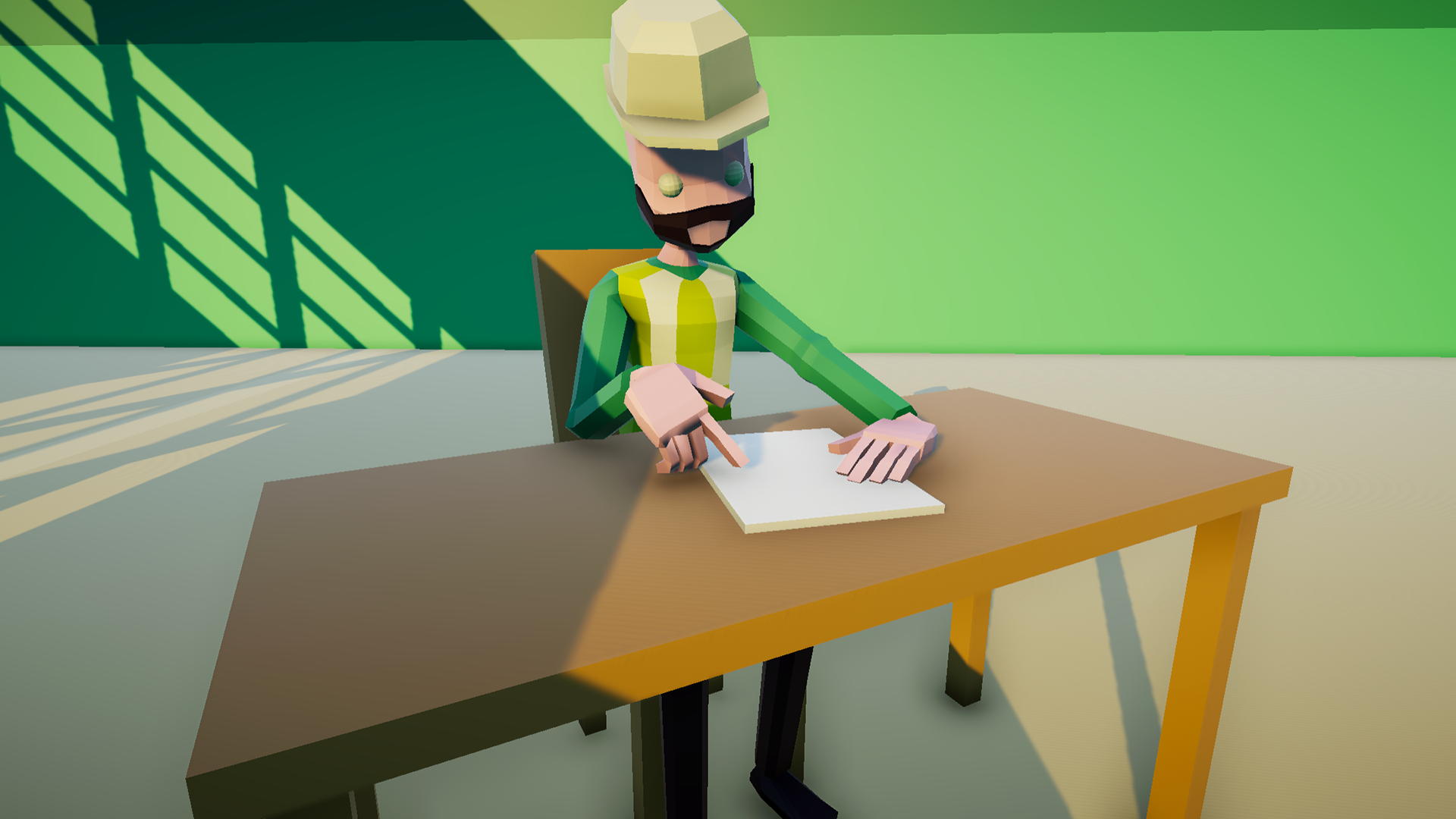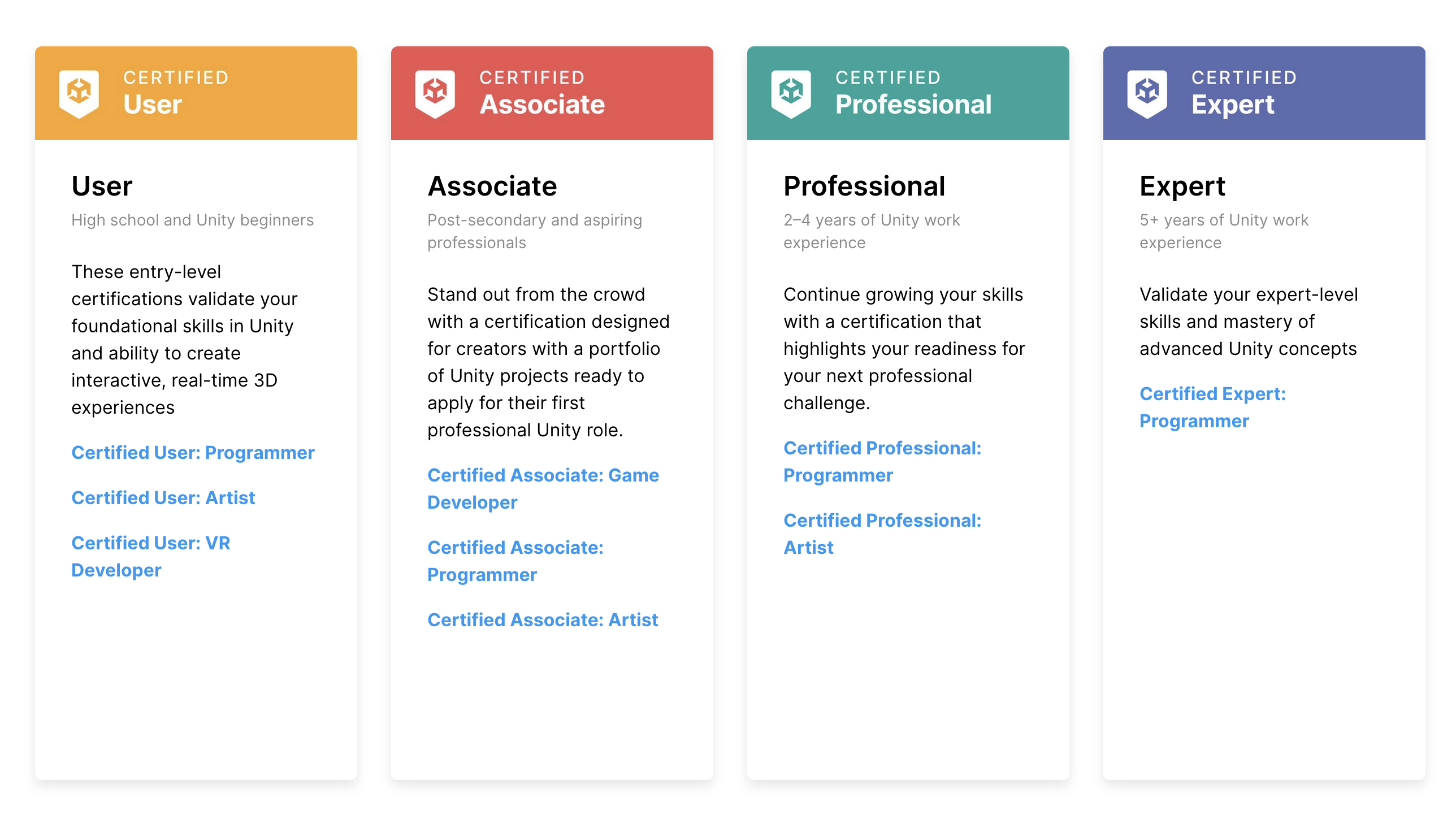Job preparation: Junior Programmer
Tutorial
·
Beginner
·
+10XP
·
15 mins
·
(1550)
Unity Technologies

In this tutorial, you’ll review guidance on:
- Evidencing your progress
- Updating your portfolio and resume
- Preparing for interviews
1. Overview
Congratulations for reaching the end of the Junior Programmer Pathway! This is the final Mission of this phase of your learning journey.
This is a great opportunity to consider the progress you’ve made so far in your professional development, even if you don’t intend to apply for roles at this time.
2. Consider certification
As you explored in Career research and preparation, certifications are something you may want to consider to evidence your skills and showcase your readiness to hiring managers.
When you complete this Learning Pathway, you will have had the opportunity to develop:
- All the skills and competencies validated by the Certified Associate: Programmer certification
- Most of the skills and competencies validated by the Certified Associate: Game Developer certification
If you decide that getting Unity certified is right for you, then you may want to consider:
- Taking a certification practice test
- Completing the certification courseware to make sure that you are exam-ready
- Reviewing previous learning materials and associated exercises, to consolidate your understanding of key concepts, processes and activities

3. Review your resume and portfolio
Even if you don’t plan to apply for new jobs now, this is an excellent opportunity to assess the progress you’ve made and update these documents.
Identify appropriate job roles
First, return to your career research document you started in Career research and preparation. Review your research, and use it to search for the roles that feel are the best fit for you right now. Common job titles that align to this Pathway include:
- Junior Programmer
- Junior Unity Developer
- Junior Unity Software Engineer
- Junior Gameplay Programmer
- Junior 3D Programmer.
Tip: When searching for job listings, try using keywords like “Unity” and “C# “to help you find appropriate roles.
As you explore different job listings, update your career research document with the following information for each job role you are interested in:
- Specific job descriptions with required qualifications
- The expected skillsets
- The expected technical knowledge
- Necessary training and/or qualifications required
- The expected/typical salary range
Update your portfolio and resume
Next, reflect on both the job requirements you explored in the previous step and the progress you’ve made during this Pathway. Take some time to:
- Update and review your portfolio — make sure it’s up to date and that it showcases the skills you need for the jobs you are applying for.
- Create a new resume, or update your existing one, to reflect the skills you’ve learned in this Pathway. There are a number of resume templates available online as well as best practice guidance for writing a resume. You can also embed your resume within your portfolio, like Joy Horvath did in her Artstation portfolio.
Prepare to apply
Using your research, determine which jobs you want to apply for. When preparing to apply for a role:
- Write a cover letter tailored to the role and company, if this is requested. There are many great resources online to help you write a focused and engaging cover letter.
- Proofread your resume, portfolio, and cover letter. This is an important time to catch any typos and spelling errors!
- Ask friends, family members, colleagues, or others you trust to review your application materials and the job description. Try to leave enough time before the deadline that they can do this without rushing, and you can make revisions based on their feedback (if necessary).
- Identify possible additional ways to market your skills and approach jobs or programs of interest — this could include social media presence, game jams, and hack-a-thons.
4. Preparing for an interview
When you’re successful in the first stages of a job application, you will progress to the interview(s). An interview could be conducted in-person or remotely. The key to approaching interviews is preparation.
Research the company
Before your interview, take time to deepen your knowledge of the company. This could include:
- Getting to know their core products — try out anything you can access yourself. If the cost is too great, why not review a Let’s Play or recording of others using the products?
- Spend time on the company website, researching its mission and values.
- Use LinkedIn to see if you have any connections at the company — if you do, try reaching out for advice and to learn more about the company from an actual employee.
Know your role
Review your job role research, particularly the key skills and knowledge required. Consider what your potential employer needs to know before hiring you. As part of this preparation:
- Create a list of potential interview questions for the job based on the skills and competencies required. For example, an interviewer might say, “Tell me about a time when you met a deadline under time pressure,” to find out about your ability to deliver under pressure and manage your time effectively.
- Identify times when you demonstrated each key skill, whether in a previous role, in school, or in this Pathway.
- Draft an answer to the question using your experience. There’s lots of excellent advice available online about how to structure answers clearly.
- Draft a list of questions you want to ask the company in turn — you will usually have an opportunity to do this.
Prepare for the test
Some roles, particularly programming roles, will require a test. Take some time to research the kinds of tests typically given to junior programmers, and practice and prepare as much as possible.
Note: This guidance is still relevant if you are looking for freelance contracts rather than staff roles. You’ll still need to update your portfolio and resume, do your research, and prepare for the interview process.
5. Get an established creator perspective
For some inspiration, here’s James Turnage-Lannan, a Content Producer on the Unity Social Impact team, on how he prepared for his very first QA Testing role:

About 2-3 years after High School and a handful of retail jobs I coasted between, I found a job posting for a QA Games Tester position. The job posting listed requirements like:
- Must love playing video games
- Must have an attention to detail
- Must have good writing and communication skills
- Must work well with others
I filled out the application and about two weeks later I received a call back with an interest to interview me. I was excited yet terrified. This was a huge step in the direction towards my dream job in the video game industry but I had absolutely no training or idea on what it really meant to be a QA Tester.
Leading up to the interview, I did my research and found articles and videos that helped paint a picture of what the job would be like, and that only made me even more terrified. A majority of the research led me to believe that being a QA Tester was a nightmare. The research told me that I’d be working long hours, forced to play the same level of a game every single day for months on end, and I would eventually be laid off after the game went gold (ready for release) and not be asked to return. Despite learning all of that, I knew I still wanted the job.
The day of the interview came around and I made the effort to look presentable and arrived 30 minutes early. I was nervous as ever and was already fearing the worst due to my lack of experience or training. I had to quickly push the nerves out of my system as interview time quickly approached.
I met with the interviewer and we walked into a small enclosed room for the interview. Questions I was asked:
- Introduction (he lead with his role, who the company was/what they did)
- Could you talk to me about your job experience?
- What makes you interested in this role?
- Tell me about your gaming experience. How invested are you in them?
- Tell me about a time you've encountered a bug in a game
- Can you write down the steps you took to experience that bug? (on a piece of paper)
- Logistics (working hours, expectations, pay, etc.)
After what seemed like a lifetime of questions, the interview was over and I was thanked for my time and walked out of the building for what I thought would be the first and last time. About 3 days later I received a call back with a job offer as a contract QA Tester!
6. Summary and next steps
As you start your job search and placement journey, please return here and help those who are starting this journey after you.
Use our commenting features or post in the UnityDiscussions to:
- Share your job search and interviewing experiences.
- Offer advice from what you've learned.
- Help the next cohort of Junior Programmer jobseekers as they get started!
A great next step in your learning journey is using what you learned in the Introduction to real-time experience design tutorial and take the Design and Publish Your Original Game: Unity USC Games Unlocked course to create your next real-time creation. This course introduces the Agile Design process and guides you through creating a game. While this course is game-centric you can still use the design process to produce any real-time project. We recommend taking this course to build an additional project to showcase in your portfolio.